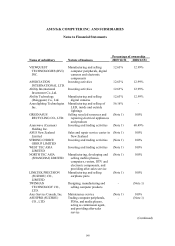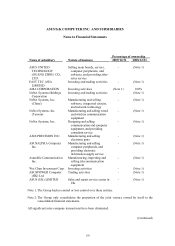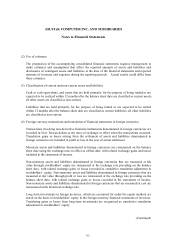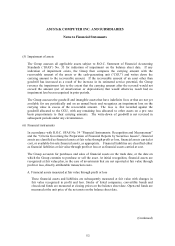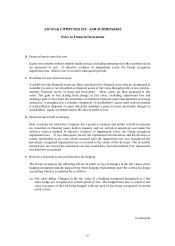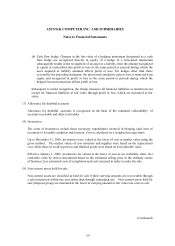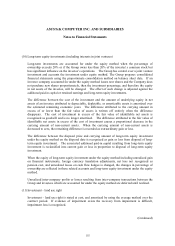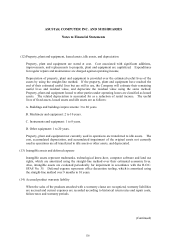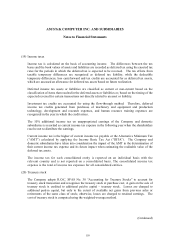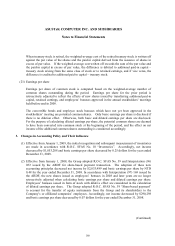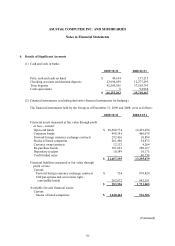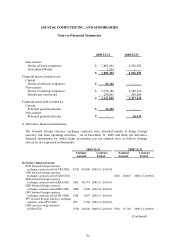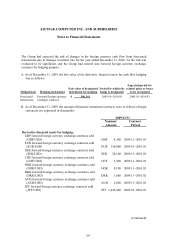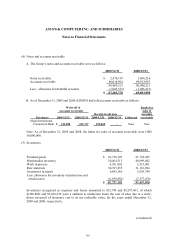Asus 2009 Annual Report Download - page 159
Download and view the complete annual report
Please find page 159 of the 2009 Asus annual report below. You can navigate through the pages in the report by either clicking on the pages listed below, or by using the keyword search tool below to find specific information within the annual report.155
ASUSTeK COMPUTER INC. AND SUBSIDIARIES
Notes to Financial Statements
(Continued)
(10) Long-term equity investments (including interests in joint ventures)
Long-term investments are accounted for under the equity method when the percentage of
ownership exceeds 20% or if the Group owns less than 20% of the investee’ s common stock but
has significant influence on the investee’ s operations. The Group has control over a joint venture
investment and accounts the investment under equity method. The Group prepares consolidated
financial statements using the proportionate consolidation method on balance sheet date. If an
investee company accounted for under the equity method issues new shares and the Company does
not purchase new shares proportionately, then the investment percentage, and therefore the equity
in net assets of the investee, will be changed. The effect of such change is adjusted against the
additional paid-in capital or retained earnings and long-term equity investments.
The difference between the cost of the investment and the amount of underlying equity in net
assets of an investee attributed to depreciable, depletable, or amortizable assets is amortized over
the estimated remaining economic years. The difference attributed to the carrying amount in
excess of or lower than the fair value of assets is written off entirely when the difference
disappears. The cost of investment in excess of the fair value of identifiable net assets is
recognized as goodwill and is no longer amortized. The difference attributed to the fair value of
identifiable net assets in excess of the cost of investment causes a proportional decrease in the
carrying amount of non-current assets. When the carrying amount of non-current assets is
decreased to zero, the remaining difference is recorded as extraordinary gain or loss.
The difference between the disposal price and carrying amount of long-term equity investment
under the equity method on the disposal date is recognized as gain or loss from disposal of long-
term equity investment. The associated additional paid-in capital resulting from long-term equity
investment is reclassified into current gain or loss in proportion to disposal of long-term equity
investment.
When the equity of long-term equity investment under the equity method including unrealized gain
on financial instruments, foreign currency translation adjustments, net loss not recognized as
pension cost, and unrealized losses on cash flow hedges is changed, the changes in percentage of
ownership are reflected in those related accounts and long-term equity investment under the equity
method.
Unrealized inter-company profits or losses resulting from inter-company transactions between the
Group and investees which are accounted for under the equity method are deferred until realized.
(11) Investment – land use right
Investment – land use right is stated at cost, and amortized by using the average method over the
contract period. If evidence of impairment exists the recovery from impairment is difficult,
impairment loss is recognized.






